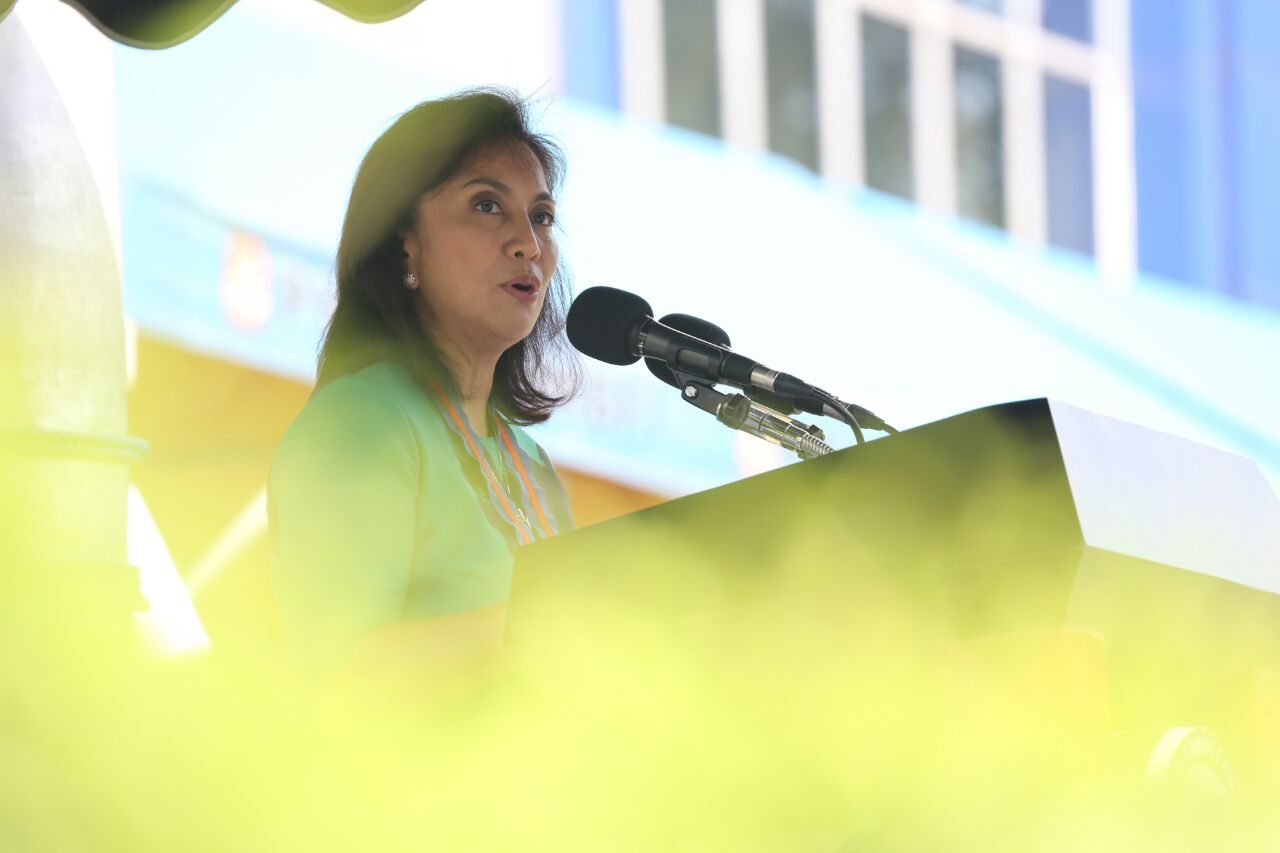SUMMARY
This is AI generated summarization, which may have errors. For context, always refer to the full article.

MANILA, Philippines – Vice President Leni Robredo pressed the need to roll out a community-based drug rehabilitation program for drug suspects who had voluntarily surrendered to authorities following the government’s war on drugs, to stem the killings linked to the campaign.
Addressing various stakeholders on Tuesday night, October 11, Robredo said that as a government interagency panel finalizes a national drug rehabilitation program, the Office of the Vice President (OVP) has initiated test models of community rehabilitation in 11 local government units.
The pilot sites, which have yet to be officially released, were identified based on the number of surrenderers in the area and the quality of its local governance. The Vice President said these pilot areas will serve as models for community rehabilitation that the national government may also consider or adopt.
“We can adjust along the way because if we keep on planning, there could be more people killed than rehabilitated by the end of the year,” the Vice President said.
The Duterte administration’s war on drugs has been linked to the deaths of more than 3,000 people allegedly involved in illegal drugs. It has drawn concern from local groups, international bodies such as the United Nations, and foreign governments including the United States.
The Philippine government has sent a formal invitation to the UN to investigate the spate of killings.
Faith-based groups and nongovernmental organizations that initiated their own drug interventions, and even former drug dependents joined the OVP for a consultation on Tuesday.
The results of the consultations will be integrated into the existing programs of the LGUs that the OVP will help capacitate.
National rehab program
The OVP is part of the interagency panel that is crafting a national drug rehabilitation program, led by the Department of the Interior and Local Government.
The 3-pillar program also involves the Philippine National Police (PNP), Department of Health (DOH), Department of Education (DepEd), and the Department of Social Welfare and Development (DSWD), among others.
Robredo said that based on her consultations, many local chief executives are having problems on what to do with the large volume of drug surrenderers in their areas.
Of the 700,000 drug surrenderers nationwide, only 10% are qualified for admission into institutional drug rehabilitation centers, mostly operated by the DOH. A bulk of the remaining number only require intervention by community leaders or civil society. (READ: Only around 500 surrenderees admitted so far in drug rehab centers)
“What we are talking about is spending government money to put up government centers….Why do you have to spend so much money when in fact, so little of the enormous amount is eligible for institutional rehabilitation?” Robredo said.
“It has been 3 months, I guess most of the [barangays] have programs already and we need to help them capacitate,” she told the stakeholders at the meeting.
Rehab in the works
Cabinet Secretary Leoncio Evasco Jr has ordered concerned agencies to submit their budget proposals to the DILG for the national drug rehabilitation program.
The DSWD, for its part, has proposed the reallocation of its P1.4 billion funds for its share in the program. The agency handles the 3rd pillar of the program, or the reintegration of the drug dependents to the community,
“What we want is to help the drug users and pushers who have surrendered to rehabilitate themselves and return to the fold of society as productive members. Each of them have stories and personal histories that have led them to lives of drug using or peddling, and we hope that through the series of interventions our government agencies want to provide to them, we can help them leave this segment of their lives behind them,” Social Welfare Secretary Judy Taguiwalo said earlier.
DOH is in charge of the first pillar, which involves the the screening and referral of needed intervention. This will be done in partnership with the Philippine Drug Enforcement Agency (PDEA), National Bureau of Investigation (NBI), PNP, and DILG, the Dangerous Drugs Board (DDB)
The community-based rehabilitation pillar or Pillar 2 will be led by the Ugnayan ng Barangay at Simbahan (UBAS), together with the PNP, the DSWD, the Technical and Skills Development Authority (TESDA), the DILG and the DOH. – Rappler.com
Add a comment
How does this make you feel?
There are no comments yet. Add your comment to start the conversation.